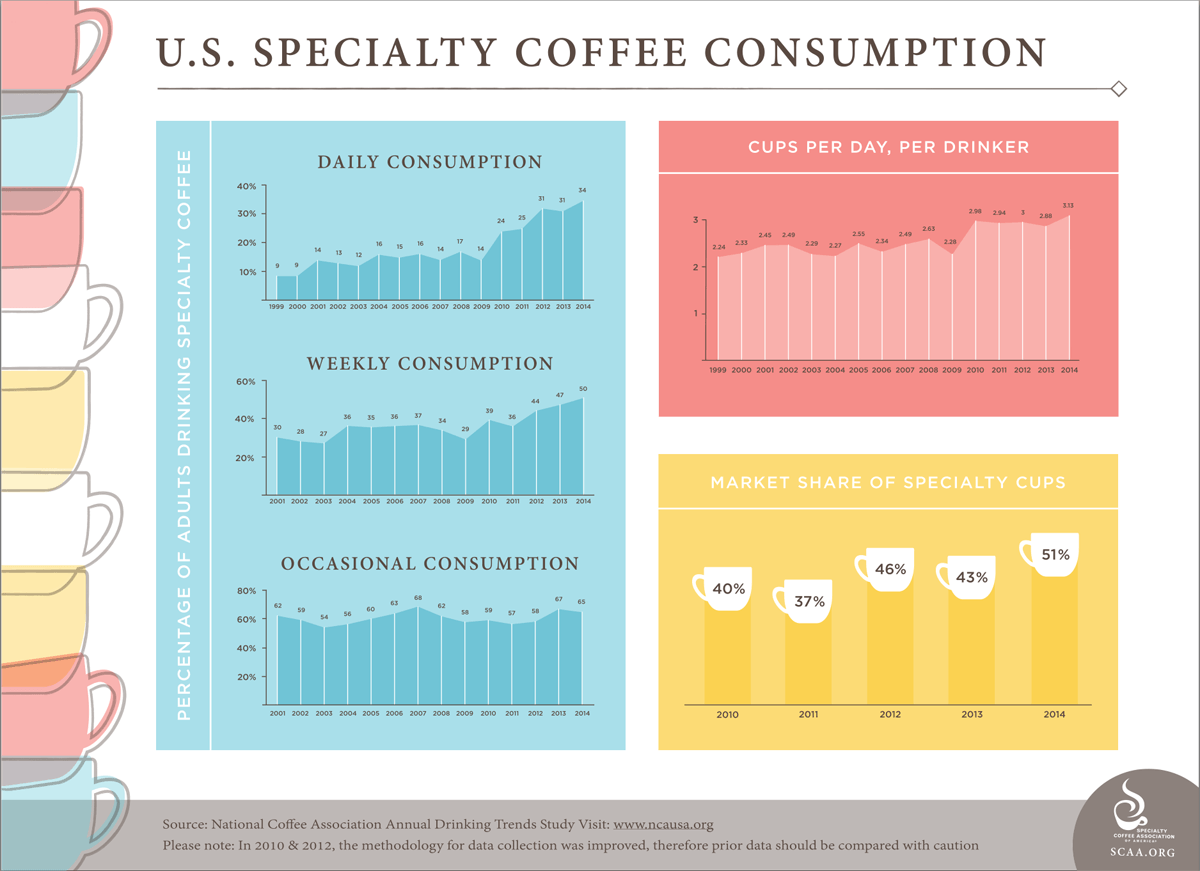Cold Brew vs Iced Coffee

When the sun comes out and you start itching to be outside, hot coffee begins to seem a little less appealing—especially in the heat of the afternoon. Instead, you want something cooling, something refreshing… Iced coffee. But things are more complicated now. You used to just make hot coffee over ice, but now there’s this newer thing called “cold brew coffee” as well. Two options instead of one. Thankfully, the differences aren’t that complicated, but the differences in flavors and overall experiences are still pretty significant. Let’s break it down so you can tune in to the style of iced coffee that’s going to be best for your taste preferences and lifestyle.
What's the Difference? Cold Brew vs Iced Coffee
Iced Coffee: Tried and True
There are really two ways traditional iced coffee is made, and we need to make the distinction between the two before we go any further.- Hot Coffee + Ice— This method involves making extra-strong hot coffee, allowing it to cool, and then pouring it over ice. This is often considered the lowest form of iced coffee because the flavors are rarely balanced and it’s almost always watered down.
- Iced Pour Over Coffee— This method involves making hot coffee with a pour over cone, like the Chemex or Hario V60. Except, instead of letting the hot coffee collect below, you fill the carafe with ice so that the hot coffee is chilled instantly. This preserves the flavors and aromas and results in a more balanced, tasty brew.
In specialty coffee, we always suggest iced pour over coffee. Chilling the coffee while it brews makes the coffee less volatile, which pretty much means it decays a lot more slowly, hence the better flavors.
Recommended Gear and Technique for Iced Coffee
As far as gear goes, iced pour over coffee is on the complex side. You need a pour over cone and a carafe with ice at the bare minimum. But to really brew a stellar glass, you’ll also need a special pour over kettle and a kitchen scale, both of which offer a ton of control and consistency. As you slowly pour the hot water over the coffee grounds, the water drains, becomes liquid coffee, and drains through the filter and onto the ice. You usually cut the amount of water used by 30-50% in order to ensure the final result isn’t watered down.
Iced Coffee - The Final Result
Iced pour over coffee, because it’s made with hot water, has all the flavors, acids, bitter compounds, and aromas of regular hot coffee. However, the instant chilling accomplishes a few things.- The aromas remain in the coffee. Aromatic compounds evaporate rapidly when hot, but when cold, they tend to stay within your glass—and that leads to a pleasant flavor boost.
- Your tongue interprets the flavors differently. Your taste buds work differently at low temperatures. The acids seem a bit crisper and the coffee tastes a bit sweeter, among other things.
Cold Brew Coffee: The Coffee of the Future
Cold brew coffee (also commonly referred to as cold press coffee) has been around for a few years now, but it’s still pretty misunderstood because the brewing process and final coffee are so different. In fact, cold brew coffee sometimes tastes so different that you may not even guess it’s coffee if you didn’t already know. The main difference? You’re making the coffee with cold water and steeping for extended periods of time.
The Best Gear and Technique for Cold Brew Coffee
Making cold brew coffee is incredibly simple. Basically, all you do is immerse coarse coffee grounds in cold water, let it steep for 18+ hours, and then filter and drain. (We roast a medium-dark blend specifically balanced for cold brew, our Northern Lights Blend.) Most people will purchase a Toddy home brew system to brew cold brew, but you can really use anything from a french press or mason jar to your bathtub (please don’t). For filtering, the easiest thing to use is a pour over cone and paper coffee filter.
Cold Brew Coffee - The Final Result
Cold brewing, because it uses cold water, creates a final brew that’s chemically different from hot coffee. Like with iced pour over coffee, those aromatic compounds stay in the coffee and boost the flavor. Unlike iced pour over coffee, the cold water brewing results in less acidity and bitterness—up to 66% less! This makes cold brew taste incredibly smooth and sweet. Many coffee skeptics actually discover they like cold brew because it’s so smooth. Cold brewing has another fundamental difference from iced pour over brewing: it doesn’t make ready-to-drink coffee, it makes a concentrate. This concentrate is super strong by itself, which is why we typically dilute the concentrate with water and ice to create the drinkable cold brew constitute. This makes it a lot easier to customize the strength of your iced coffee, but that’s not all. There are actually a ton of ways you can use cold brew concentrate.- Mix with hot water. This gives you a hot cold brew coffee. It’s smooth and sweet like cold brew—just hot.
- Mix with milk. Cut the concentrate with milk to create a cold brew iced latte of sorts.
- Mix with soda water and syrup. Add simple syrup to the concentrate and top with your favorite soda water to make a cold brew soda.
Iced pour over coffee is full-flavored, tangy, and sweet. Cold brew coffee is full-bodied, smooth, and sweet. Both iced coffee options are delicious ones, but the differences in brewing gear and technique mean they probably both won’t thrive with your particular lifestyle and brewing habits. So which do you think is the better iced coffee style for you? No matter which method you prefer, it’s always best to start with one of the best coffee blends for iced coffee and cold brew, our Northern Lights Cold Brew Blend.




